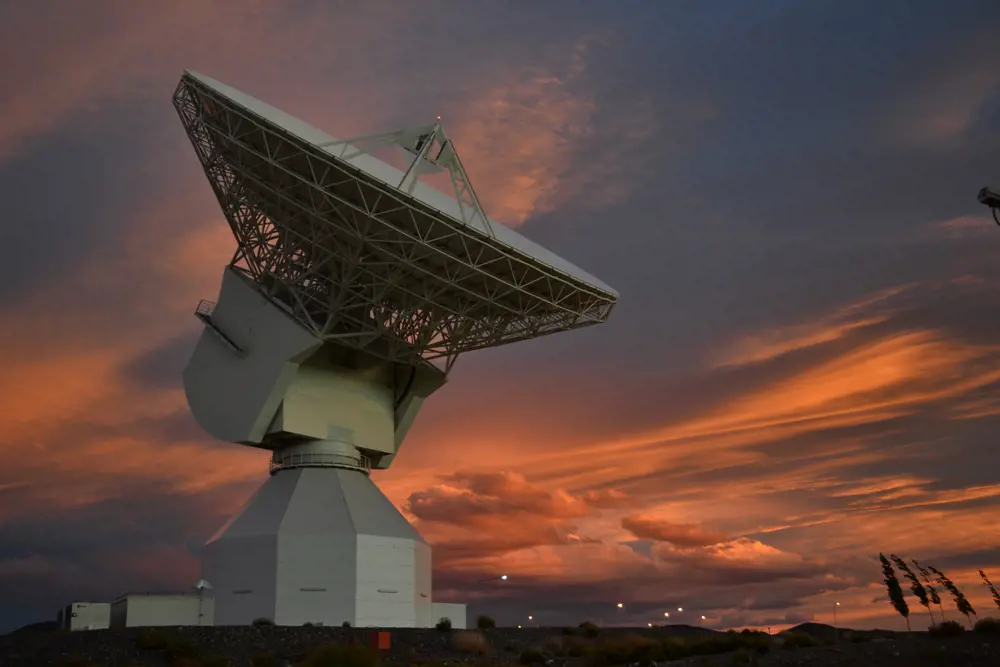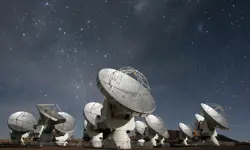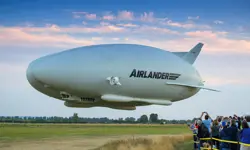
Communicating with outer space
Drifting downwards, the Rosetta space probe snapped a few final close-ups of the comet it had spent nearly two years circling. As the spacecraft, the size of a family car, settled on the surface of the distant Comet 67P/Churyumov–Gerasimenko, it marked the end of an extraordinary piece of exploration.
Rosetta had travelled almost eight billion kilometres through the solar system as it chased and orbited the comet. The data it sent back provided unparalleled insights into objects that are normally only experienced as transient pinpricks of light in the night sky. As the images taken in the final moments of the probe’s mission appeared on the screens at the European Space Agency’s (ESA) Operations Centre in Germany, they highlighted the feat of communication that made the entire endeavour possible.
Transmitting data across 719 million kilometres of space from just metres above the comet’s surface is an achievement in itself. Yet the radio communications between Rosetta and the scientists back on Earth did far more
Transmitting data across 719 million kilometres of space from just metres above the comet’s surface is an achievement in itself. Yet the radio communications between Rosetta and the scientists back on Earth did far more than simply exchange data; they enabled the scientists to reach the comet in the first place.
Hitting the mark
Underpinning the infrastructure of the ground stations used during the mission was the Intermediate Frequency Modem System (IFMS), a powerful satellite modem system developed by BAE Systems. In addition to untangling the 350 gigabytes of data beamed back by Rosetta, the system enabled precise calculations of the spacecraft’s position, acting like a GPS for the solar system.
It was a crucial tool in allowing the spacecraft to navigate during its 6.4 billion kilometre journey from Earth to the comet, a target only four kilometres wide and moving at 135,000 kilometres per hour. Some of those working on the mission have compared this to trying to toss a grain of sand through the eye of a needle from 16,000 kilometres away. A tiny error would have seen the spacecraft fly wide of its mark, ending the mission in failure.
The secret behind this achievement can be traced to more than two decades ago, when ESA decided to upgrade the ground stations it was using to pick up radio signals from its spacecraft. At the time, a technology called software-defined radio was starting to emerge. Rather than using the analogue components found in traditional radios to tune to the signal, filter and demodulate it, this technology converts the raw signal into digital bits from which processors and software can extract the necessary information. It has the key advantage of flexibility, enabling the radio to change function with just a change of software.

Data sent from the Rosetta spacecraft to ground stations, such as this one in Malargüe, Argentina, was translated by the Intermediate Frequency Modem System. This allowed scientists to reach the comet with the craft and target the landing of the Philae probe © ESA–D. Pazos
BAE Systems had already been using software-defined radio in some commercial and military applications in the early 1990s, and this experience led to its successful bid to develop the technology ESA needed to communicate with its future space missions.
However, one of the biggest challenges was meeting the ESA’s extremely tight requirements for preserving the quality of the signals received from distant parts of the solar system. Degrading those weak signals when processing them, even by a small amount, could render them useless.
one of the biggest challenges was meeting the ESA’s extremely tight requirements for preserving the quality of the signals received from distant parts of the solar system
A key aspect of maintaining signal purity is the process of converting the analogue radio signal into a stream of digital samples. BAE Systems used a number of novel techniques to improve the performance of a commercial signal converter to the point where it would meet ESA’s exacting requirements. Once converted to digital form, most of the subsequent processing is done using a type of microchip known as field programmable gate arrays (FPGA). These consist of logic blocks that can be wired up to handle complex computations in parallel rather than in sequence, which is what occurs in most traditional software. This allowed the designers to develop sophisticated algorithms that could maintain a high level of purity and stability as the radio signals were processed.
The ability to perform computations concurrently ensured that the quality of the data itself was preserved, while allowing the system to extract additional information to calculate the spacecraft’s position from the radio signal. At the time the IFMS was being built, there were two main ways of doing this.
The first approach uses the Doppler effect: the change in wave frequency as two objects move in relation to each other. By looking for this in the signal beamed back by the spacecraft, it was possible for scientists to work out how fast it was moving relative to the Earth.
The second uses a method known as ranging, which involves beaming a unique sequence of tones within a signal to the spacecraft, and measuring the time it takes for it to be returned to Earth. Using the speed it takes light to travel through the near vacuum of space, and the known time it takes for the spacecraft to turn the pulse around, it is possible to work out the vehicle’s distance from home. However, ESA wanted its new technology to have a lifetime of at least 15 years, which meant that the team building IFMS had to ensure it could cope with the future.
Using Delta-Dor to pinpoint a spacecraft
📡 Pinpointing Spacecraft Locations through Ground Station Timing
By recording the signals received by two ground stations – one just outside Madrid and the other outside Perth in Australia, for example – it is possible to find the time when a specific wave pattern arrives at each.
As the distance between the two stations is known, this timing information can be used to work out the angle that the radio signal came from. For example, if the arrival time is exactly the same, then it means the ground stations sit at either end of a isosceles triangle.
If one ground station receives the signal from the spacecraft slightly sooner than the other, then it means that the spacecraft is off to one side. Using this to draw invisible lines back out into space, the spacecraft can then be pinpointed at the point where they intersect.
Decoding data
Traditional computer chips process information in a pipeline, so that each chip does one job before passing it along to the next. However, the IFMS engineers decided to build multiple interconnections between the 24 microchips involved in processing the signals so that data could be shunted back and forth.
In the early days of the IFMS’s operational life, there was no obvious need for this level of complexity in the nine ground stations where it was installed. The processors were more than capable of easily handling the amount of information received through their antennas, yet the technology was to prove crucial later for the IFMS system and the Rosetta mission. Around 2005, ESA began a series of audacious planetary missions that were unlike any it had tried before. To realise these, it needed to use a third and relatively new technique for tracking spacecraft.
Delta Differential One-way Ranging (delta-DOR) had not been considered necessary when the IFMS was being put together in the 1990s. With the system’s inbuilt flexibility, engineers were able to write new software for it that would make the system possible. They added the completely new function without the need for new hardware.
By listening with two ground stations simultaneously, it is possible to measure the time difference between each station receiving a signal from a spacecraft and to use this to triangulate the spacecraft’s position
Delta-DOR is, in essence, relatively simple. By listening with two ground stations simultaneously, it is possible to measure the time difference between each station receiving a signal from a spacecraft and to use this to triangulate the spacecraft’s position. In practice, it required some dramatic changes to the way the IFMS had been originally designed to handle signals. Rather than locking to a single signal and demodulating that, it instead began being used to record large chunks of the radio frequency spectrum, which could be processed later.
This approach, known as open-loop recording, is like listening to a room full of people all talking at once. Rather than focusing on what just one person was saying, open-loop recording stores what everyone said so you can search through it later to find the conversation you were looking for. This system makes it possible to search for specific features within the signals broadcast by a spacecraft, and tag them with a time stamp when they are received by each ground station. However, the arrival time at each station can also be affected by a number of sources of error, such as the time it takes for radio waves to travel through the different thicknesses of atmosphere above each ground station, or errors in the clocks at the stations.
Even tiny disturbances such as the pressure of sunlight on a spacecraft can be enough to push them off course
Rosetta: The comet chaser
☄️ The first spacecraft to land on a comet’s surface
Launched in 2004, the Rosetta mission clocked up a litany of firsts in its 12-year mission to rendezvous and orbit the comet 67P/Churyumov–Gerasimenko.
It marked the first time that a spacecraft had landed on the surface of a comet. Earlier missions had flown past comets, and in one carried out by Nasa, the spacecraft smashed into one.
The Rosetta probe had a small lander called Philae onboard, which descended down to the comet’s surface in November 2014. Sadly, a fault with its harpoon system saw it bounce twice on the surface and settle on a dark ditch beneath a cliff face. Unable to get enough sunlight on its solar panels, it quickly ran out of power, but not before sending a few images from the surface along with a treasure trove of data back to its mothership orbiting above.
Despite the setback with Philae, the data collected by Rosetta and its little lander revealed the turbulent lifecycle of comet 67P and how its surface is continually reshaped by geysers of water vapour that shoot out as it turns into the Sun’s glare. It also discovered free oxygen in the thin atmosphere surrounding the comet.

This image of comet 67P/Churyumov–Gerasimenko was photographed by the Rosetta spacecraft when it was 22.8 kilometres away © ESA/Comet on 29 September 2016 – OSIRIS wide-angle camera
To overcome such errors, open-loop recording can also be used to simultaneously track the radio waves coming from a quasar (a galaxy-sized black hole that emits vast amounts of energy) in the same part of the sky as the spacecraft sending the signal. Quasars emit a noise-like signal in a random waveform that is received by both ground stations. The two waveforms are slid past each other in a correlator to look for a match, and this correlation peak reports the timing offset between the two recordings. Scientists can then use this to work out the direction the radio signal came from at each ground station and trace them back as invisible lines to a point where they intersect. This technique allows ESA’s scientists to work out the position of a spacecraft to an accuracy of one kilometre for every 100 million kilometres it is from Earth. It has proved crucial for modern missions probing distant parts of the solar system and its planets. While space is mostly empty, it is also not quite a vacuum. On journeys that cover millions, if not billions, of kilometres, spacecraft can drift from their original path. Even tiny disturbances such as the pressure of sunlight on a spacecraft can be enough to push them off course.
Spacecraft also rarely travel directly to their destination. There are no rockets on Earth powerful enough to provide the boost needed to travel those sorts of distances. Instead, spacecraft take circuitous routes that slingshot around planets to build up the speed they need with the assistance of gravity. Rosetta used four such gravity assists to reach comet 67P – three around the Earth and one around Mars. If the trajectory is even slightly wrong, the spacecraft will either fly fatally into the planet or whizz past without picking up enough energy.
Once a spacecraft leaves our atmosphere, it can still be directly observed by large optical telescopes, even when it is a few million kilometres away. However, in most cases, optical tracking cannot currently achieve the accuracy of radio-based tracking and it cannot be used for spacecraft that are further than a few million kilometres away. From the first moments after its launch in 2004, Rosetta was reliant upon the navigational techniques enabled by the IFMS to reach its target 10 years later.
At Rosetta’s furthest point from Earth, signals took over 40 minutes to get back, and for other space missions, the communication time lag can be even greater
At Rosetta’s furthest point from Earth, signals took over 40 minutes to get back, and for other space missions, the communication time lag can be even greater. An experiment to test whether IFMS could be used to support American spacecraft saw it receive a signal from Nasa’s Voyager 2 spacecraft that took 10 hours to travel just one way. With these long time lags, it becomes crucial to know exactly where the spacecraft is to ensure it stays on course.
The IFMS played a vital role in a key moment of the Rosetta mission. In 2011, the spacecraft’s orbit took it so far away from the Sun that it could not generate enough electricity on its solar arrays to keep all of its instruments going, so it was put into deep-space hibernation.
For this 31-month segment of its journey, the spacecraft essentially shut down as it raced through the solar system without any contact with Earth. Before it went into hibernation, the spacecraft was given commands to put it into a spin to help keep it on a stable course. To check that it was spinning correctly, ESA’s mission team used the IFMS open-loop recording feature to look for variations in the carrier signal as it rotated.
Later, as the probe neared the comet, Doppler measurements and the delta-DOR technique helped to tweak its trajectory so that it slotted into orbit around the comet. They also proved vital in ensuring that the spacecraft was on the correct trajectory to release the Philae lander to touchdown on the comet’s surface.
Technology that evolves
Today, nearly 15 years after IFMS was first put into operation, the system is operating at the very limits of what it can manage. It was designed to handle 20 MHz of bandwidth at a time and now all of its processors are working at full capacity.
To keep it working with technology that dates from the 1990s – and gives it only slightly more signal processing power than found in modern smartphones – BAE Systems’ engineers have become efficient at writing software by stripping out unnecessary bits of an algorithm that might use up precious processing power whenever they update the system.
Fortunately, BAE Systems and ESA are now developing a successor to IFMS. The Telemetry Telecommand and Control Processor (TTCP) will be capable of handling 600 MHz of bandwidth simultaneously, 30 times more than IFMS. Just one of TTCP’s 24 processing chips will have the capacity of all 24 chips in the IFMS, and this extra power will be crucial for the future missions it will support. One of these will be ESA’s Euclid mission to map the dark energy in the universe, which is due to launch in 2020. Its huge cameras will generate so much data that it will need to send back 70 Mb every second.

Rosetta’s long journey through the Solar System involved three fly-bys of the Earth and one of Mars, each of which needed to be targeted very precisely to give it enough energy to get to the comet. Throughout this time, the Intermediate Frequency Modem System was used to communicate with the spacecraft andmeasure its position © ESA
The improved navigational capabilities will also benefit missions such as ESA’s BepiColombo mission to Mercury. Due to launch in 2017, one of its scientific goals is to search for violations to Einstein’s Theory of General Relativity. To do this, ESA’s scientists will need to determine the spacecraft’s position to an accuracy of just 10 centimetres as it orbits a planet that is 77 million kilometres away.
Yet even as engineers begin to think about rolling out this new system in the next year, IFMS has provided a final demonstration of what it has made possible. At the end of September 2016, Rosetta was given commands that sent it on a collision course with the comet it had been orbiting. However, Rosetta was not to go out in a blaze of glory like many other space missions; instead, it glided at a crawling pace to touch down delicately on the dusty surface. It was an impressive finale to the spacecraft’s precisely controlled ballet through the solar system.
***
This article has been adapted from "Communicating with outer space", which originally appeared in the print edition of Ingenia 70 (March 2017).
Contributors
Richard Gray
Author
Nick James is an Executive Engineer at BAE Systems Applied Intelligence and a BAE Systems Global Engineering Fellow. He is an engineer with more than 20 years of experience in the application of complex signal processing hardware and algorithms to radio systems, particularly in the space communications and spacecraft tracking field.
Keep up-to-date with Ingenia for free
SubscribeRelated content
Aerospace

ALMA – the high altitude observatory
The Atacama Large Millimetre/submillimetre Array (ALMA) is the largest and most expensive ground-based telescope built, revolutionising our understanding of stars and planetary systems. Building it in the Atacama Desert in Chile required the ingenuity of hundreds of engineers.

An aircraft like no other
The Airlander made headlines when it embarked on its first test flight in August 2016 as the world’s largest aircraft. Chris Daniels at Hybrid Air Vehicles Limited, and David Burns, Airlander’s Chief Test Pilot, talk about the engineering that helped it reach this stage and plans for the craft’s future.

Q&A: Lucy Harden
Lucy Harden is a mechanical engineer on BAE Systems’ Digital Light Engine Head-Up Display development programme. She devises innovative solutions for pilots to display essential flight information that sits directly in their line of sight and is overlaid onto the real world.

Ready to break records
In October 2017, almost a decade of engineering development finally came to fruition when the Bloodhound Supersonic Car embarked upon its first tests at Newquay Airport. Mark Chapman, Bloodhound’s Engineering Director, spoke about how it will attempt to break the world land speed record in South Africa.
Other content from Ingenia
Quick read

- Environment & sustainability
- Opinion
A young engineer’s perspective on the good, the bad and the ugly of COP27

- Environment & sustainability
- Issue 95
How do we pay for net zero technologies?
Quick read

- Transport
- Mechanical
- How I got here
Electrifying trains and STEMAZING outreach

- Civil & structural
- Environment & sustainability
- Issue 95